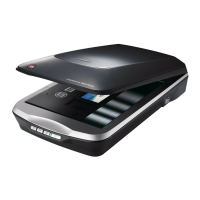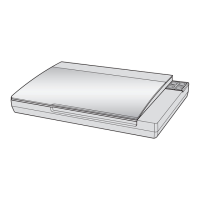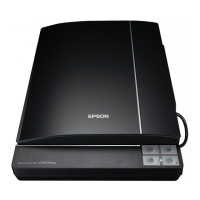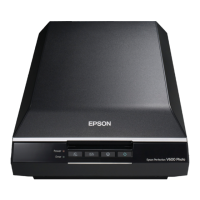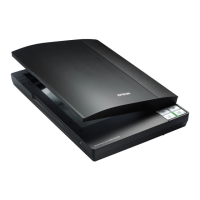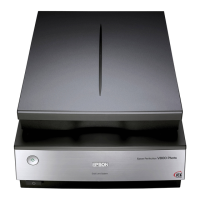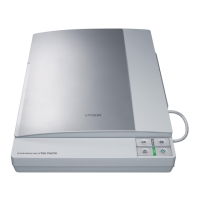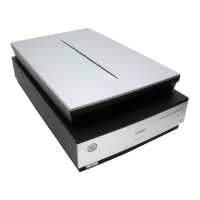EPSON Perfection V500 Photo Revision A
OPERATING PRINCIPLES Digital ICE Function Operation 22
2.2 Digital ICE Function Operation
This scanner features Digital ICE for Film, an image correction process that uses a
combination of hardware and software to detect and eliminate physical flaws, dust or
dirt, either on the Film or the scanner itself. (Film includes color or monochrome
negative, and color positive.)
2.2.1 Digital ICE for Film Overview
Because of its longer wavelength, infrared light normally passes completely through
film media, such as negatives or slides, during a scan. Physical flaws or dust, however,
do block infrared light. When a film document with dust or physical flaws is scanned
using infrared light, the light is physically blocked by the flaw or dust, and the resulting
image clearly shows only the dust and/or flaws present. By superimposing the images
scanned with infrared light and visible light, the Film-ICE software is able to detect the
inconsistency in the digitized data caused by the flaw and automatically remove it
using interpolated image data to overwrite and correct the image. Because of the
difference in wavelength between infrared light and visible light, a secondary lens
(“Glass Plate” in the images below) must be employed during the Film-ICE visible-
light scan to compensate for the resulting difference in the size of the images so that
they can be superimposed accurately. The Glass Plate is moved into and out of position
by a solenoid.
Figure 2-7. Refraction of Infrared Light and Visible Light
Digital ICE for Film Process Sequence
1. Read the visible light position. Two holes in the upper housing are scanned with
visible light in order to register the home position of image being scanned.
2. Move the secondary lens (Glass Plate) into position and scan the film in visible-
light.
3. Read the infrared light position.
4. Retract the secondary lens and scan the film in infrared-light.
5. Electronically superimpose the images obtained from each light source and
identify the physical flaws and/or foreign matter.
6. Replace the “flaw” image data with image data interpolated from adjacent areas.
Figure 2-8. Extraction/Correction of Dust by Film-ICE Function
Lens CCDGlass Plate
Infrared Light
Lens CCDGlass Plate
Visible Light
Dirt on the Slide After Correction
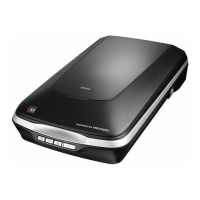
